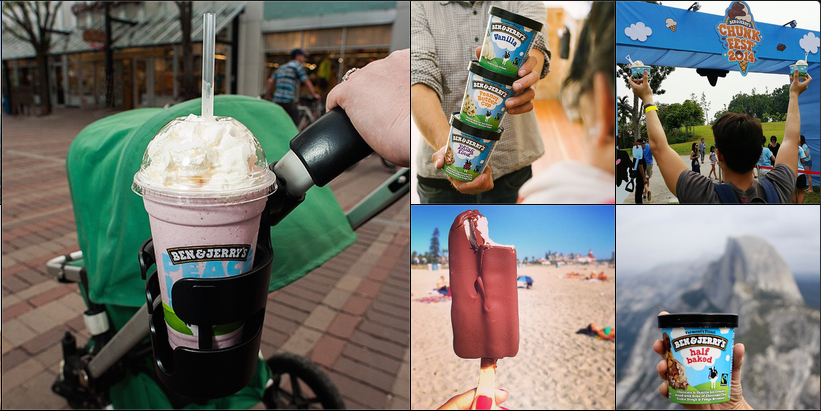According to Google, mobile devices – particularly smartphones – have forever changed the way our customers live. It’s also fractured the consumer journey to online purchase into hundreds of real-time, intent-driven micro-moments. And this has forever changed what consumers – especially 18-to-34-year-olds – expect of brands. And that makes each one of these micro-moments a critical opportunity for brands to shape their decisions and preferences.
Thanks to mobile devices, micro-moments can happen anytime, anywhere. In those moments, consumers expect brands to address their needs with real-time relevance.
What Are Micro-Moments?
Perhaps the best way to get up to speed on the concept of “micro-moments” is to watch a short video from Think with Google, “Micro-Moments.” Uploaded to YouTube on Sept. 23, the video’s description explains, “Life is lived in moments. And today, so many of these moments are mobile – whether we’re enjoying a new playlist, sharing a vacation photo with family, or checking in on what our friends are up to.”
Thanks to Think with Google, there’s a full PDF guide with strategies, insights, case studies, and customer examples for mastering micro-moments.
However, once you get up to speed on micro-moments, you’ll realize that one of the things that they will require you to do is dramatically change your video strategy.
Up to now, the smartest video strategy seemed to be the one employed by John Lewis, the leading department store chain in the United Kingdom. Each year at this time, John Lewis would launch a new Christmas advert on YouTube – “The Journey” in 2012; “The Bear & The Hare” in 2013; and “#MontyThePenguin” in 2014. This year, the John Lewis Christmas advert is “#ManOnTheMoon.”
https://www.youtube.com/watch?v=wuz2ILq4UeABut this may be the last time that this widely-anticipated, big budget, annual effort may be the best video strategy for John Lewis or other brands.
Why?
What Video Micro-Moments Mean For Your Strategy
Four hundred hours of video are uploaded to YouTube every minute, so when we turn to our mobile devices to watch video, we can choose from a nearly limitless library of on-demand content. That makes what we choose to watch more “momentary” than ever.
Lucas Watson, the Vice President of Global Brand Solutions and Innovations at Google, tackles this issue in a recent article, “Video Micro-Moments: What Do They Mean for Your Video Strategy?” He wrote:
“Video consumption has gone from primetime to all-the-time – and to address this shift in behavior, we need a new marketing model when it comes to video strategy.
When consumers look for answers, discover new things, or make decisions, they’re often turning to a device for help. At Google, we call these micro-moments, and they can happen in search, on your brand’s website, in an app, and – increasingly – they’re happening on YouTube.
These moments of intent are redefining the purchase journey; people want the right information right away. Brands’ opportunities to connect with consumers through video have exploded into millions of these moments. But to win at video micro-moments, you have to know how to identify them and how to act on them.”
He goes on reveal that video micro-moments generally fall into four categories:
- “I want-to-watch-what-I’m-into” moments, when people are seeking videos on their passions or interests. And 53 percent of online video viewers watch online video to be inspired or entertained.
- “I want-to-know” moments, when people are trying to learn something. And nearly 70 percent of Millennials agree they can find a YouTube video on anything they want to learn.
- “I want-to-do” moments, when they’re looking for step-by-step instructions on how to make or do something. And searches related to “how-to” are up 70 percent year-over-year on YouTube.
- “I want-to-buy” moments, when they’re using video to try before they buy. And 18-to-34-year-olds say YouTube is the best place to learn about a product or service that interests them.
Brands Winning Consumers In Video Micro-Moments
Watson goes on to outline three ways to make sure you’re staying relevant and useful in moments that really matter. He uses beauty brand Sephora as an example of a brand has figured out how to use video to play a meaningful role during one of these micro-moments.
But other brands are also using video to shape the decisions and preferences of smartphone users based on what they want in the moments that really matter. Here are five examples.
1. Coca-Cola
When Coca-Cola launched its “Share a Coke” campaign, it recognized that people may turn to mobile to find their own customized Coke.
In “Coca-Cola Meets Consumers in the Moment on Mobile,” Wendy Clark, President of Sparkling Brands & Strategic Marketing for Coca-Cola North America, reveals how “Share a Coke” inspired consumers to take action and how Coca-Cola was there for them in the moment on mobile.
2. ‘Star Wars’ (Disney)
Before millions of people go to the movies, they go to YouTube – often on their smartphones. This is especially true among teens and young millennials, 65 percent of whom agree that watching trailers on YouTube influences which movies they will see.
Perhaps this explains why “Star Wars: The Force Awakens Trailer (Official),” which was published on Oct. 19, 2015, already has more than 57.3 million views.
3. Realtor.com
Realtor.com’s marketing team realized that searching for home listings is only one step in a long (and often confusing) home-buying journey. To be helpful to first-time homebuyers, they enlisted the help of actress Elizabeth Banks to create step-by-step videos to walk consumers through the home-buying process.
For an example, check out “Episode 1: Knowing When You’re Ready.” The two-minute videos resonated with consumers, driving 400,000 YouTube views in the first three weeks and more than 1.4 million views in the first four months.
https://www.youtube.com/watch?v=8TQC987BSiU4. Home Depot
Home Depot marketers figured out years ago that do-it-yourselfers were turning to their phones to learn everything from “how to tile a bathroom floor” to “how to build an outdoor fire pit area.” Many consumer ended up searching for answers on YouTube.
So to be more useful in these I‑want-to-do moments, Home Depot began to build out a better content marketing strategy by creating a “how-to” collection on YouTube. Today, the collection has hundreds of videos, with the top videos reaching more than a million views. The full Home Depot “how-to” collection has received more than 43 million views.
5. Unilever
Unilever realized that online demand for hair information wasn’t being met by beauty brands. So they partnered with Google to use search term data to predict hair trends and consumer behaviors before they hit the market.
Based on these insights, bloggers for Unilever’s “All Things Hair” YouTube channel created new content with consumer intent and context in mind. They provided simple, credible answers to consumers in their I‑want-to-do hair care moments and drove phenomenal brand engagement.
The result: Unilever’s channel became the #1 hair brand channel on YouTube in just 10 weeks. Within a year, the channel had amassed over 50 million YouTube views! Fifty million times when people wanted help with their hair, Unilever was there.
Now that video consumption has been fractured into hundreds of real-time, intent-driven micro-moments, brands need to shift their video programming schedules and advertising budgets to capitalize on these micro-moments. Yes, Christmas will continue to be a major event on the department store chain’s calendar and, yes, the Christmas season now stretches from early November to late December. But what about hundreds of micro-moments that occur throughout the other 10 months of the year?


